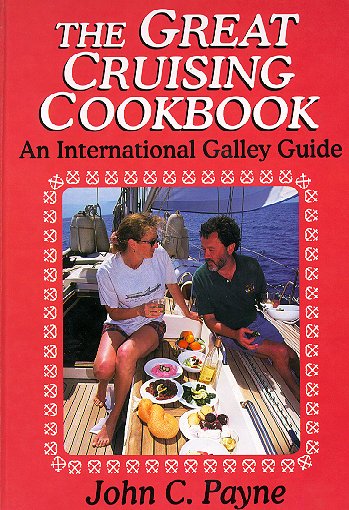About Yacht Fishing
Yacht fishing is usually carried out when under sail and in fairly mild weather conditions. Trolled lures are the general method of fishing for pelagic fish off a yacht stern. On many occasions I have had to slow down to optimum trolling speed, sometimes food is just as good as the passage time. Sometimes I just stop and drift if the area shows good potential for fish.
Yacht fishing tips
Fishing from a sailing yacht is a rewarding and sustainable way to supplement onboard provisioning, offering fresh seafood and engaging activity during passages or anchorages. I am somewhat addicted to this pursuit and still love that excitement of pulling in something delicious.
Sailboat fishing is typically done while underway using trolling techniques, where lines with lures or bait are trailed behind the yacht at low speeds. Common targets include mahi-mahi, tuna, wahoo, and barracuda, especially in tropical cruising grounds like the Bahamas, Caribbean, and South Pacific. Simple gear — such as hand lines, rod holders, and diving lures — can yield excellent results without requiring complex setups. I often find simplicity works best when fishing.
Yacht fishing tips
At anchor or inshore, casting or bottom fishing is effective for reef fish and smaller species. A dinghy can expand access to shallower or reef-rich areas. Key considerations include local fishing regulations, licensing, and respecting marine protected zones. Many charter destinations require permits, and catch limits vary by region, so check up on the local rules as penalties can be quite severe.
Safety is critical: fishing lines must be kept clear of propellers and rudders, and gear should be stowed securely to avoid entanglement. Fish handling requires gloves, pliers, and a safe filleting station—often the transom or cockpit table.
Beyond provisioning, fishing adds a cultural and experiential layer to sailing. It connects sailors to local ecosystems and offers memorable moments, from the thrill of the catch to sea-to-table meals. With minimal gear and thoughtful planning, fishing from a sailing yacht becomes a practical and enriching part of the cruising lifestyle.
More Yacht fishing tips
There are a few basic recommendations to follow. If using lines, braided lines are generally a lot better as it tends to kink a lot less. My personal choice on my boat is braided line with at least a 200lb (90 kg) breaking strain leader. Use stainless or black swivels to join the trace. The cord is attached to the boat using a rubber toilet pipe sealing ring to cushion the strike shock. If using a reel then one with a variable clutch is essential. Most fish are lost (the ones that get away!) as they break the line on the initial strike and run. Set the tension so that it pays out under medium pressure. When a fish strikes, round up and take way off the boat, then just wind in hard, do not tighten up the clutch. Wear the sailing gloves when you haul them in, as line can cause nasty lacerations when a saltwater fish does a run.
The best catches of fish are always taken along reef edges and close to deep passages, around islands. The best boat speeds are around 3-6 knots, with around 100 feet (30 meters) of line paid out astern.
Landing Yacht Fishing Catch
Gaff the fish before lifting aboard, as many a good saltwater fish is lost at this stage as the hooks straighten out, lines break or the traces are severed. You lose a good and expensive lure as well. When you land your catch, use a net, as so many fish lost when hauling straight on board, then promptly dispatch the victim between the eyes with something heavy and blunt, I use a winch handle, and then bleed the fish straight away. This is done by cutting either under or behind the gills. Stand and have your picture taken with the fish for the album and then bleed, fillet and put straight on ice or in the frig. Failure to do this will mean rapid softening and discoloration of the flesh, which is a waste after all the effort and expense.
Yacht Fishing Lures
For every saltwater fish there are several lures. There are many brands of lures, some prefer spoons and similar or more lifelike lures that imitate saltwater fish movement and colors. The best lures to use varies, I use squid types, with lots of color and bubble creation, also I use either as a leader or as the lure, a flying fish. The flying fish skips across the water like the real prey that many tropical pelagic saltwater fish subsist on, as a leader I place one about 6-8 feet up from another smaller different lure. The fish are attracted to the skipping flying fish, and then hone in on the smaller lure. Always more great yacht fishing advice. Best advice on how to cook seafood.
